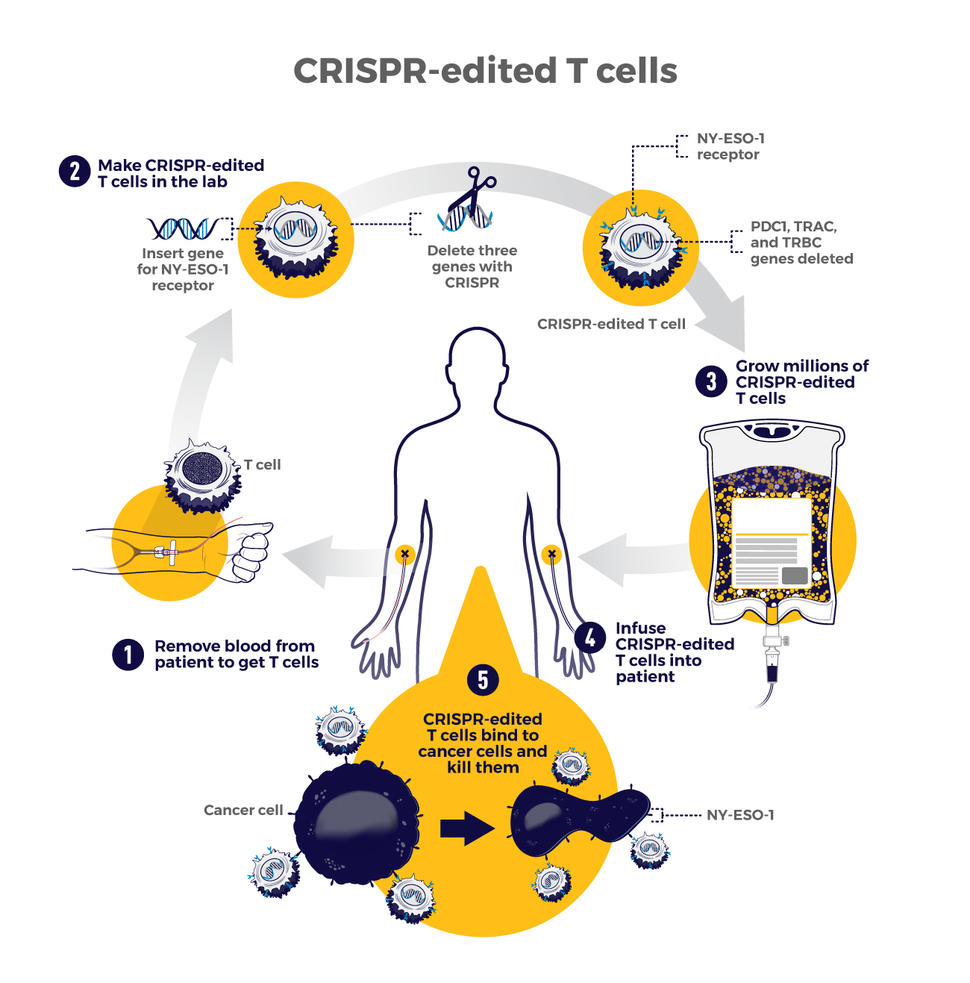What is CRISPR-Cas9?
CRISPR-Cas9 is a revolutionary gene-editing tool that’s transforming the fields of medicine, agriculture, and biotechnology. Imagine a pair of incredibly precise molecular scissors that can cut DNA at a specific location. That’s essentially what CRISPR-Cas9 is. It’s a naturally occurring system found in bacteria, adapted and refined by scientists to allow for targeted gene editing. This system uses a guide RNA molecule, designed to match a specific DNA sequence, to direct the Cas9 enzyme, which acts like the scissors, to the exact spot on the genome where the edit needs to be made. Once the DNA is cut, the cell’s natural repair mechanisms kick in, allowing scientists to either disable a gene or insert a new one.
Correcting Genetic Defects: A Hope for Inherited Diseases
One of the most promising applications of CRISPR is in treating genetic diseases. Many inherited disorders, like cystic fibrosis, sickle cell anemia, and Huntington’s disease, are caused by single gene mutations. CRISPR offers the potential to correct these mutations directly within a patient’s cells, offering a potential cure rather than just managing symptoms. While still in its early stages, clinical trials are underway, demonstrating promising results in correcting faulty genes responsible for these devastating conditions. This technology could revolutionize the treatment of these diseases, improving the quality of life and lifespan for millions.

Combating Infectious Diseases: A New Weapon in Our Arsenal
Beyond genetic diseases, CRISPR is also showing immense promise in fighting infectious diseases. Scientists are exploring ways to use CRISPR to target and eliminate viruses, like HIV, from infected cells. The technology is also being investigated as a tool to develop new antiviral drugs and vaccines. By precisely modifying the genomes of pathogens, researchers hope to render them harmless or to create effective immune responses against them. This approach offers a new front in the ongoing battle against infectious diseases, which continually evolve and adapt to existing treatments.
Revolutionizing Agriculture: Enhancing Crop Yields and Nutrition
The impact of CRISPR extends far beyond human health. In agriculture, CRISPR is being used to engineer crops with improved traits, like increased yield, enhanced nutritional value, and resistance to pests and diseases. This technology could play a vital role in addressing global food security challenges by making crops more resilient to climate change and reducing the need for pesticides and herbicides. CRISPR-edited crops are already entering the market, offering consumers healthier and more sustainable food choices.
Ethical Considerations and Responsible Development
The power of CRISPR brings with it significant ethical considerations. The ability to alter the human germline, meaning changes that are heritable, raises concerns about unintended consequences and the potential for misuse. There are ongoing debates surrounding the ethical implications of using CRISPR to enhance human traits, rather than solely to treat diseases. International collaborations and strict regulatory frameworks are essential to ensure responsible development and deployment of this powerful technology, safeguarding against potential risks while maximizing its benefits.
The Future of CRISPR: Ongoing Research and Development
The field of CRISPR gene editing is rapidly evolving. Scientists are constantly refining the technology to increase its precision, efficiency, and safety. New variations of CRISPR systems are being developed, offering improved targeting and reduced off-target effects. Ongoing research is exploring new applications, such as gene therapy for cancer, regenerative medicine, and personalized medicine. The future holds immense potential for CRISPR to revolutionize healthcare and various other fields, but responsible research and ethical considerations must remain central to its development and application.
Overcoming Challenges and Moving Forward
Despite its incredible potential, CRISPR technology faces challenges. Delivering CRISPR components effectively to target cells in the body remains a significant hurdle, particularly for treating diseases affecting many tissues or organs. Improving the accuracy of gene editing to minimize off-target effects is crucial for ensuring the safety of CRISPR therapies. Overcoming these challenges requires ongoing research, technological advancements, and collaboration among scientists, clinicians, ethicists, and policymakers to ensure the responsible and beneficial use of this transformative technology. Visit here to learn about the CRISPR gene editing process.




